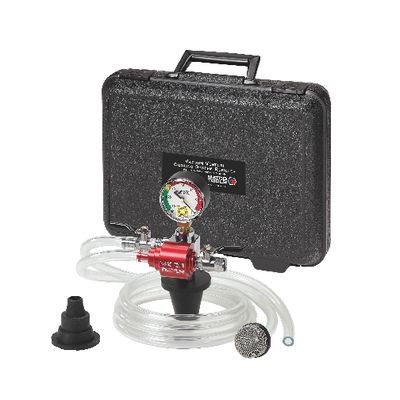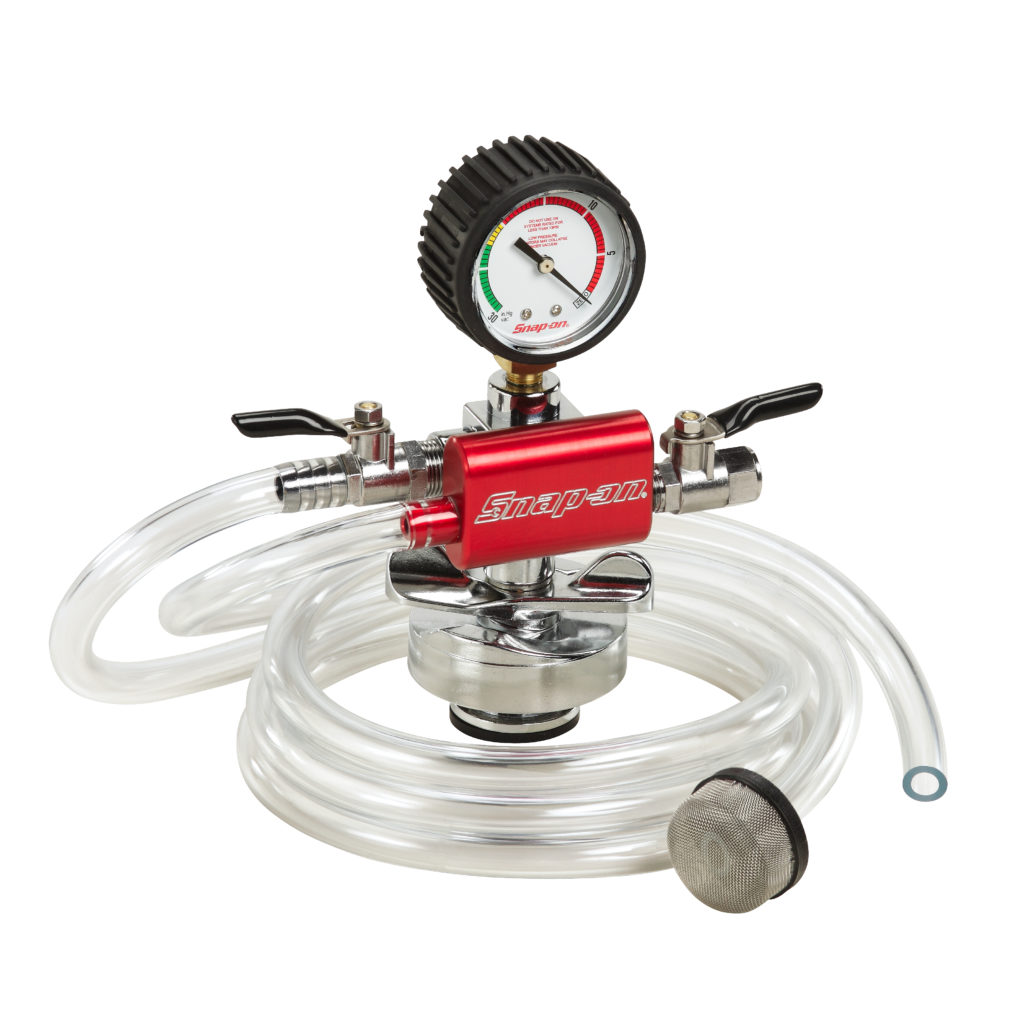

This should start the process, you will hear a loud hiss, this is the air blowing over the valve, which draws a vacuum. Then connect the airline to the vacuum unit. Connect the vacuum module to the unit, with the ball valve open. Turn the knurled knob to seal the adapter in the hole.

The tool is inserted into the neck of the radiator service port or reservoir tank using the best fitting adapter. The heater should be turned on (engine off). You need a decent size air compressor that can supply a constant 90 psi, preferably with a drier system. This is best done with an empty system, but you can use it on a full system too. Getting these out of a sealed system requires lots of effort or driving and waiting. When a sealed cooling system gets trapped air, these pockets can get stuck in over sensors and other areas, wreaking havoc on the system. Trapped air in the coolant vacuum systems leads to all kinds of problems, from overheating to erratic temperature readings, ECM fault codes, and poor drivability.
#Vacuum coolant filler skin
This means lots of spilled antifreeze, and potentially burned skin because the engine has to be running to do it. There isn’t a way to purge air from the system without burping the coolant hoses. The entire cooling system is sealed in a modern vehicle the only access point is the overflow tank, which is now considered a reservoir instead of just an overflow. While air pockets have always been an issue with engine cooling systems, modern vehicles are much worse. When you learn about something new, you feel the need to share it, and that is what brings us here now. Coolant vacuum systems are fairly simple, we have covered nearly every aspect of them in various articles here over the years, whether it is diagnostics, servicing, or even just general knowledge of how they function.


 0 kommentar(er)
0 kommentar(er)
